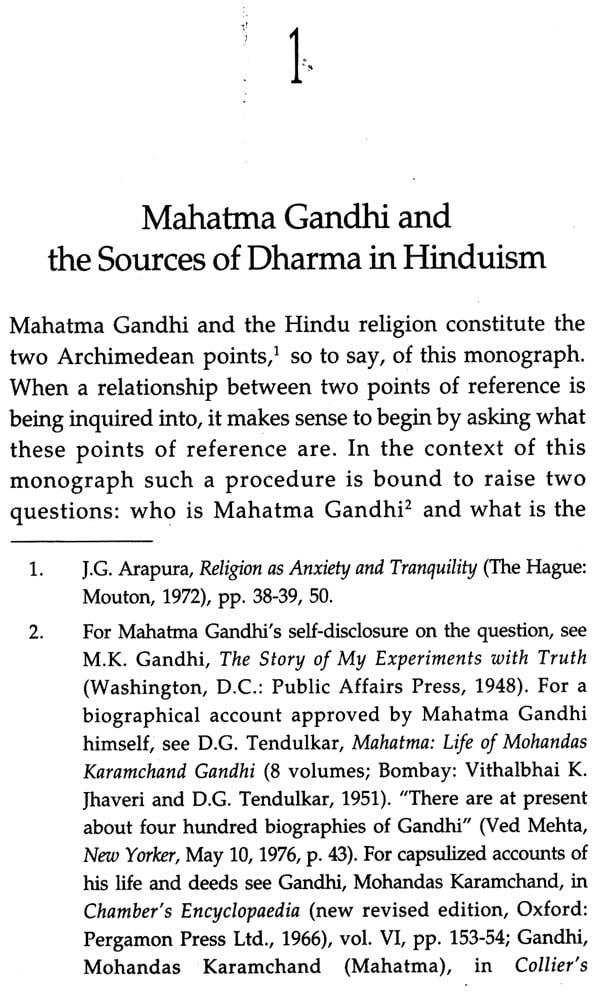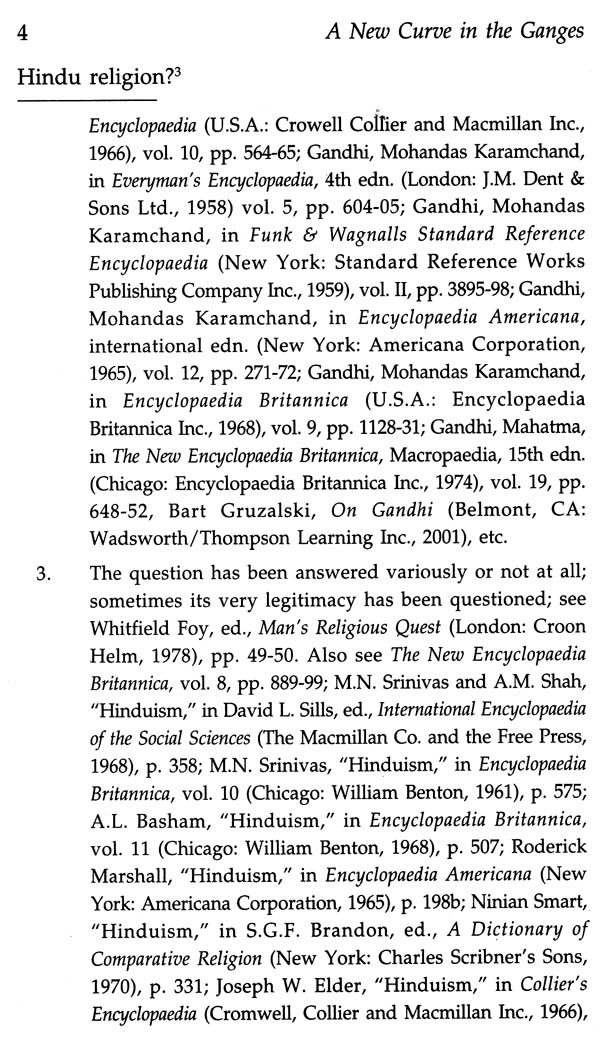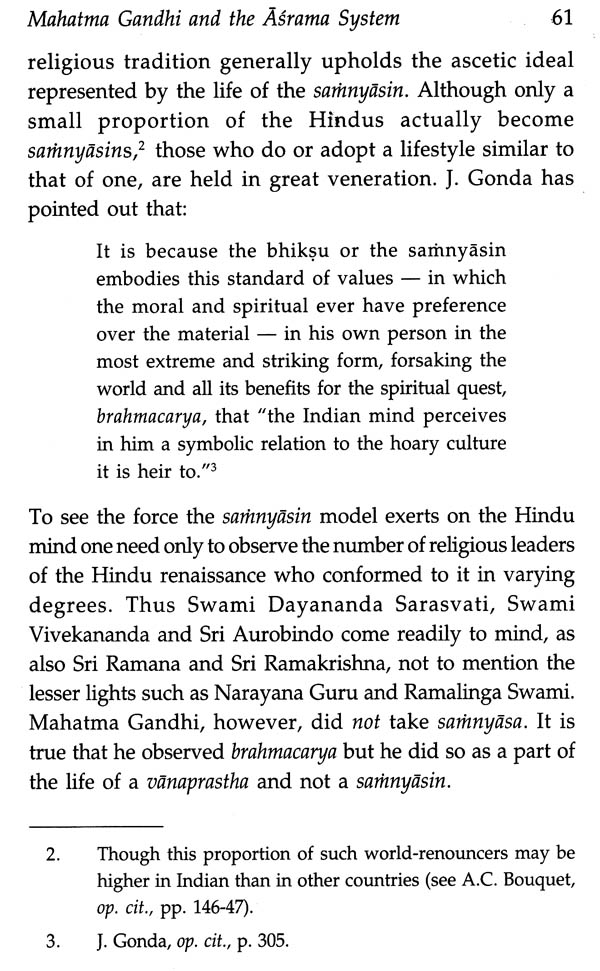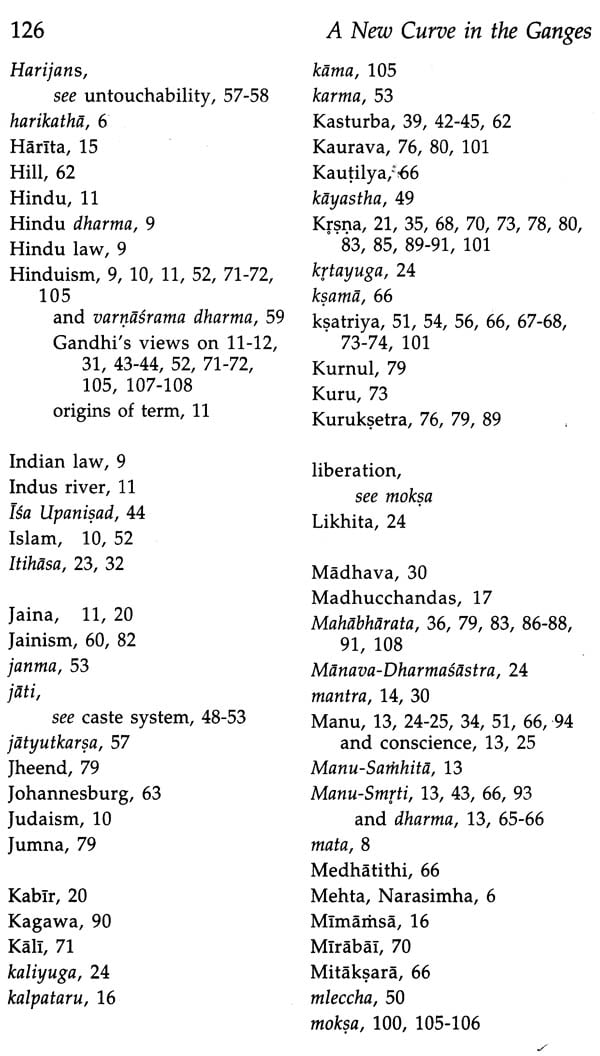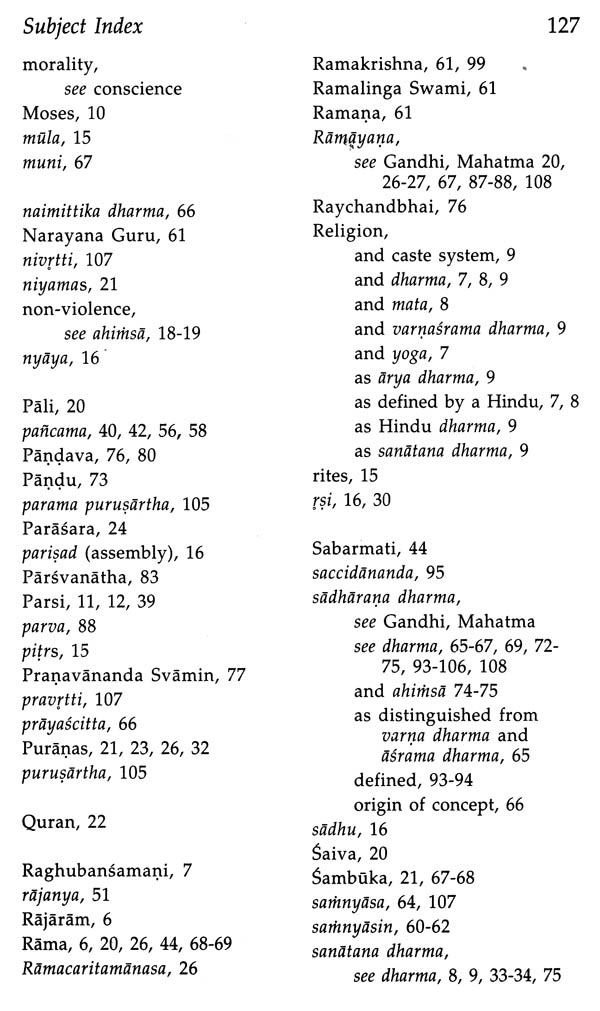
A New Curve in the Ganges- Mahatma Gandhi's Interpretation of Hinduism
Book Specification
| Item Code: | MZF263 |
| Author: | Arvind Sharma |
| Publisher: | D.K.PRINTWORLD PVT.LTD. |
| Language: | English |
| Edition: | 2005 |
| ISBN: | 9788124602713 |
| Pages: | 130 |
| Cover: | HARDCOVER |
| Other Details | 8.50 X 5.50 inch |
| Weight | 350 gm |
Book Description
Gandhi's struggle for the Indian Independence will ever remain in the mind of all generations but no less significant was his fight for social equality of the Untouchables. He himself had suffered its pain as he was excommuni- cated by his caste on his return from England. For Gandhi, untouchability was that vicious aspect of Hinduism that must be eradicated. He had his own inter- pretation of Hinduism and called himself a "Sanatani Hindu" who believed in the equality of all castes and religions.
An attempt has been made in this book to interpret Gandhi's "Hinduism" in terms of its characteristic institutions, its major scriptures and its primary thought patterns. The work offers insights into the cardinal changes that Gandhi brought about within Hinduism by promoting ordinal changes within it. It analyses Gandhi's relationship to the various sources of dharma and the primacy that he accorded to conscience; his reversal of the caste hierarchy by upholding the rights of the sudras, his emphasis on pravrtti and nivrtti instead of grhastha and sannyasa; his understanding of the Mahabharata, Ramayana and Bhagavad-Gita, and his preference for sadharana dharma over visesa dharma. The book also contains various extracts from Gandhi's autobiography that not only make this study realistic but also acquaint us with many hardships suffered by him.
This book would be a worthy addition to any collection and is highly recommended for the scholars of Indology and Religious Studies.
Arvind Sharma, formerly of the I.A.S., is the Birks Professor of Comparative religion in the Faculty of Religious Studies at McGill University in Montreal, Canada and currently engaged in promoting the adoption of a Universal Declaration of Human Rights by the World's Religions.
The mystique which surrounds the name of Mahatma Gandhi is more calculated to evoke admiration than promote analysis. And even though more than half a century has elapsed since he made his sublime departure from our midst with the name of Rama on his lips, during the course of which attempts have been made to demythologize him in various ways, his charisma still seems to rise above the miasma of confusion generated by these critiques. In a sense the greatness of such a person transcends any individual discussion of his particular failures and successes.
Difficult as it might be to be analytical about such a charismatic figure as Mahatma Gandhi, specially when one is analyzing his relationship with such a protean tradition as the Hindu, such an analysis is definitely worth undertaking because Mahatma Gandhi wrestled with his tradition instead of merely following it, implying thereby that wrestling with one’s religious tradition might well be the most faithful way of following it. This book is an attempt to analyze this curious relationship.
Mahatma Gandhi stands in a special relationship with Hinduism, a relationship rich in ironies. Himself excommunicated by his caste on his return from England, he fought all his life for the rights of the Untouchables the permanently excommunicated within it as it were; an avid reader of the Bhagavad-Gita which he interpreted allegorically, he was assassinated by another avid reader of the Bhagavad-Gita who took it literally. He claimed to be a Sanatani Hindu, a Hindu of the deepest dye, but he had passages from virtually all the religions of the world read at his prayer-meetings. Yet these are small ironies compared to the fact that in the very process of following his religion, which he claimed was Hinduism, he transformed it.
This book sets out to examine whether any pattern underlies his versatile engagement with his own tradition. Should it be possible to identify a pattern, however, it will come at a price. That price is precision. One loses in precision what one gains in pattern. It is for the reader to decide after he or she has read this book whether the price was worth it.
**Contents and Sample Pages**

